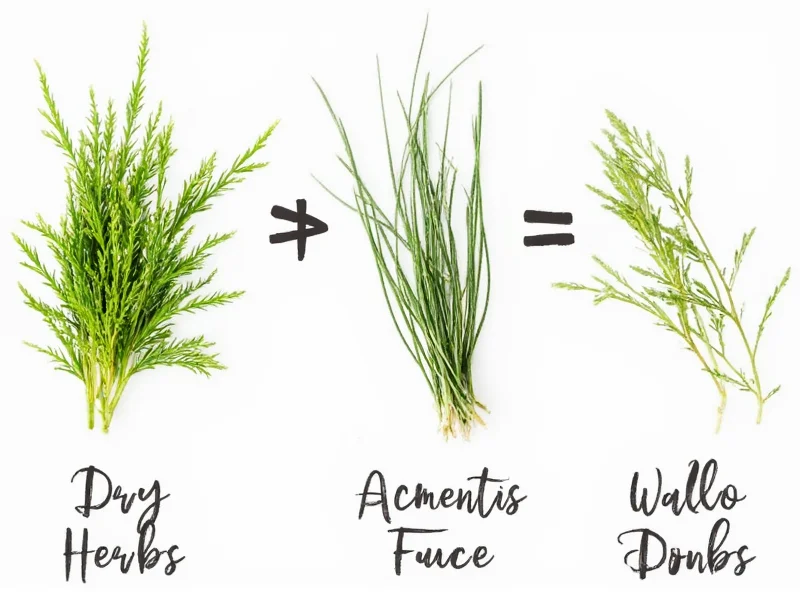Understanding dry herbs to fresh conversion is essential for precise cooking and baking. When recipes call for fresh herbs but you only have dried—or vice versa—knowing the proper substitution ratio prevents flavor imbalances that can ruin your dish. The 1:3 ratio serves as a reliable starting point, though certain herbs require slight adjustments based on their unique chemical composition and oil concentration.
Why Dried and Fresh Herbs Aren't Interchangeable
Drying concentrates herbal flavors by removing moisture content. Fresh herbs typically contain 80-90% water, while dried versions have only 5-10%. This dehydration process intensifies volatile oils and compounds responsible for flavor and aroma. Consequently, dried herbs deliver more potent flavor by volume than their fresh counterparts.
The conversion isn't perfectly uniform across all herbs. Delicate leafy herbs like basil and cilantro experience more significant flavor concentration than hardy varieties like rosemary and thyme. Additionally, storage conditions and age affect dried herbs' potency—older dried herbs may require slightly increased quantities to achieve equivalent flavor.
Dry to Fresh Herb Conversion Chart
| Herb | Dried Measurement | Fresh Measurement | Special Notes |
|---|---|---|---|
| Basil | 1 tsp | 1 tbsp | Add dried basil early in cooking; fresh added at end |
| Oregano | 1 tsp | 1 tbsp | Dried oregano has stronger flavor than fresh |
| Thyme | 3/4 tsp | 1 tbsp | Dried thyme slightly more potent than standard ratio |
| Rosemary | 3/4 tsp | 1 tbsp | Finely crush dried rosemary before use |
| Cilantro | 1/2 tsp | 1 tbsp | Fresh preferred; dried lacks distinctive flavor |
| Dill | 1 tsp | 1 tbsp | Fresh dill weed preferred for most applications |
| Mint | 1 tsp | 1 tbsp | Fresh mint significantly brighter flavor profile |
| Parsley | 1 tsp | 1 tbsp | Fresh preferred for garnish; dried for cooking |
Factors Affecting Dry Herbs to Fresh Conversion Accuracy
Several variables influence the precision of herb conversions in your cooking:
Herb Type and Structure
Leafy herbs (basil, parsley) generally follow the standard 1:3 ratio more closely than woody-stemmed varieties (rosemary, thyme). The latter often require slightly less dried herb due to higher concentration of essential oils in their structure.
Drying Method Matters
Herbs dried slowly at low temperatures retain more volatile compounds than those dried quickly at high heat. Commercially dried herbs often use methods that preserve more flavor than home-drying techniques, affecting the dry to fresh herb measurement conversion.
Storage Duration and Conditions
Dried herbs lose potency over time. Properly stored in airtight containers away from light and heat, dried herbs maintain peak flavor for 6-12 months. Older dried herbs may require up to 50% more than the standard dry herbs to fresh conversion ratio to achieve equivalent flavor intensity.
Practical Cooking Applications
When substituting dried herbs for fresh in recipes, consider these professional cooking techniques:
- Timing matters: Add dried herbs early in the cooking process to allow flavors to infuse, while fresh herbs typically go in during the last 5-10 minutes
- Rehydration trick: For certain applications, briefly soak dried herbs in warm water or broth before adding to dishes for more fresh-like distribution
- Adjust for acidity: Acidic ingredients (tomatoes, vinegar) can intensify dried herb flavors—reduce quantities by 25% in highly acidic dishes
- Taste as you go: Always adjust seasoning incrementally when converting between dried and fresh herbs to account for variables in potency
Common Mistakes in Herb Conversion
Avoid these frequent errors when working with dry herbs to fresh conversion:
- Using equal measurements (1:1 ratio) instead of the proper 1:3 conversion
- Not accounting for herb age—older dried herbs require more quantity
- Adding dried herbs at the same stage as fresh in cooking process
- Using dried delicate herbs (like cilantro) as direct substitutes without flavor adjustment
- Measuring dried herbs without breaking up clumps, leading to inconsistent distribution
Maximizing Flavor with Proper Herb Storage
Preserve your herbs' potency with these storage techniques:
For dried herbs: Store in airtight glass containers away from light, heat, and moisture. The ideal storage temperature is below 60°F (15°C). Properly stored dried herbs maintain optimal flavor for 6-12 months. Check potency by rubbing and smelling—if aroma is weak, it's time to replace.
For fresh herbs: Treat like cut flowers. Trim stems, place in water, and cover loosely with a plastic bag in the refrigerator. Most fresh herbs last 1-2 weeks this way. Alternatively, wrap in slightly damp paper towels and store in vegetable crisper.
When Fresh Is Truly Essential
While dry to fresh herb conversion works for most cooking applications, certain dishes genuinely require fresh herbs for authentic flavor:
- Ceviche and other raw seafood preparations
- Fresh herb sauces like chimichurri or pesto
- Garnishes where visual appeal matters
- Certain Middle Eastern and Southeast Asian dishes where fresh herb presence is integral to the dish's identity
Understanding these nuances helps you make informed decisions about when precise dry herbs to fresh conversion is appropriate versus when fresh herbs are non-negotiable for authentic results.











 浙公网安备
33010002000092号
浙公网安备
33010002000092号 浙B2-20120091-4
浙B2-20120091-4